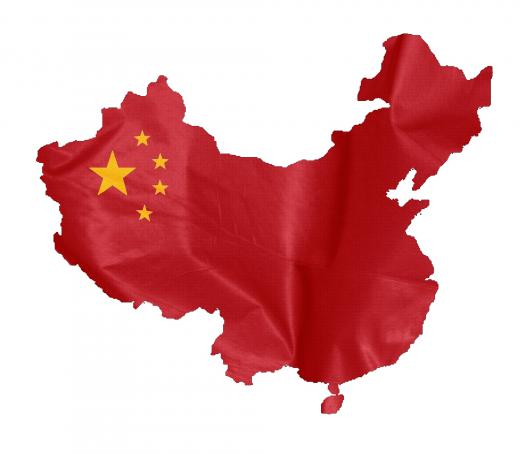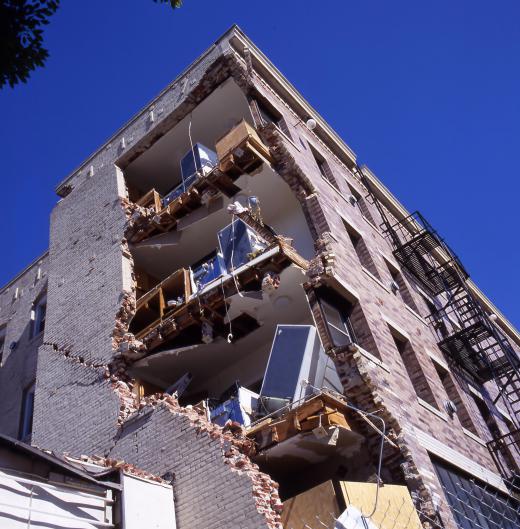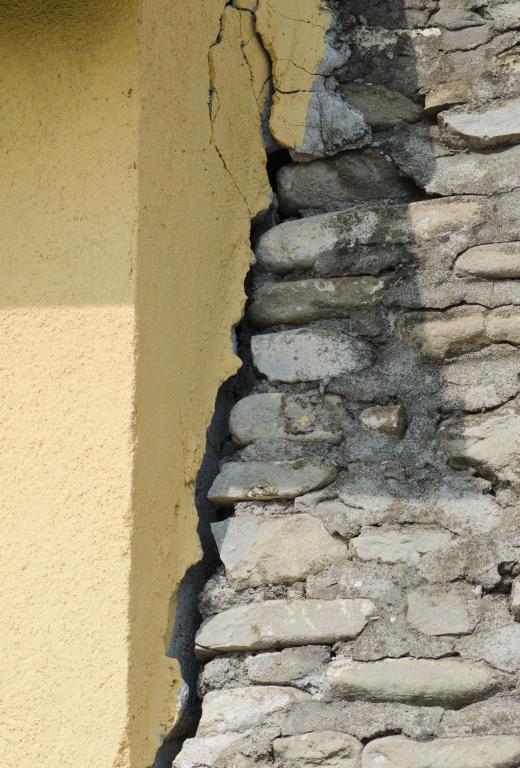Tofu buildings are buildings which are so structurally unsound that they are compared to jiggling blocks of soft tofu, which will crumble at the slightest provocation. The term originates in China, where a construction boom in the late 1990s and early 2000s led to a proliferation of such structures. The numerous issues with tofu buildings were brought to the forefront in 2008, when a devastating earthquake in Sichuan province killed tens of thousands of Chinese, many of whom were trapped when such buildings collapsed.
From the outside, tofu buildings look perfectly safe, especially to the casual eye. They have all of the components one would expect to see in a building, and often the inside is finished in such a way that it looks secure as well. The superstructure and foundation of this type of building is not sound, and this can lead to serious problems in earthquakes, floods, and fires, as the unstable building may collapse or be badly damaged.

Obviously, no one sets out to build a structurally unsound building. Tofu buildings are the result of hasty construction, designed to erect a structure as quickly and cheaply as possible. Hasty construction often results in the use of substandard materials, and relaxed inspections. Builders may also skip important steps or ignore safety protocol in the interest of getting a building up quickly, and once the building is up, authorities may be loathe to order its demolition. In addition, the structural flaws may be hidden from sight, making it harder to pinpoint tofu buildings.

In addition to being structurally unsound, tofu buildings are often rife with other problems. They may lack basic safety equipment like fire escapes, for example, and many have problems with wiring or plumbing. In communities where human populations are rapidly expanding, people are often willing to overlook problems in the interest of getting a roof over their heads, and this choice can be fatal when a building collapses or catches fire.

The extensive earthquake damage in Sichuan in 2008 raised a number of eyebrows around the world, with critics comparing Sichuan to Japan, a region which has suffered numerous large earthquakes. In Japan, however, structures are built much more carefully, with rigorous standards and inspections which do not allow tofu buildings to slip through, so the death toll tends to be comparatively low in Japan after earthquakes. Some critics were especially concerned about the rapid construction in Beijing to accommodate the 2008 Summer Olympiad, as an influx of humanity was expected to descend upon Beijing, and poorly built structures could cause a catastrophic tragedy of international proportions.
Ever since she began contributing to the site several years ago, Mary has embraced the exciting challenge of being a About Mechanics researcher and writer. Mary has a liberal arts degree from Goddard College and spends her free time reading, cooking, and exploring the great outdoors.

